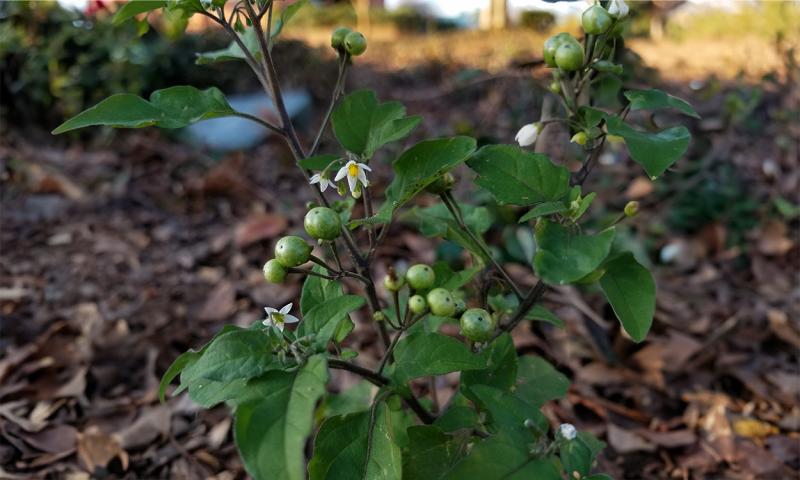
Written by Vaughn Reints, SDSU Extension Horticulture Assistant, under the direction and review of Kristine Lang, Eric Jones, and Prairey Walkling.
Eastern black nightshade (Solanum ptycanthum) is a complex plant. As gardeners, it’s vital to be well-informed about the challenges this plant can bring to our gardens. This article will explore its genus, description, optimal growing conditions, propagation, fruiting period, and methods for safe removal.
Genus
Belonging to the Solanum genus, eastern black nightshade is a member of a family of flowering plants known as Solanaceae. This family is commonly known as the “Nightshade” family and boasts over 2,000 species, including well-known plants like tomatoes, potatoes, and eggplants, but also some potentially toxic species. Solanum ptycanthum, an annual, is known for its adaptability and resilience, characteristics that enable it to grow in a variety of conditions.
Description
Seedling
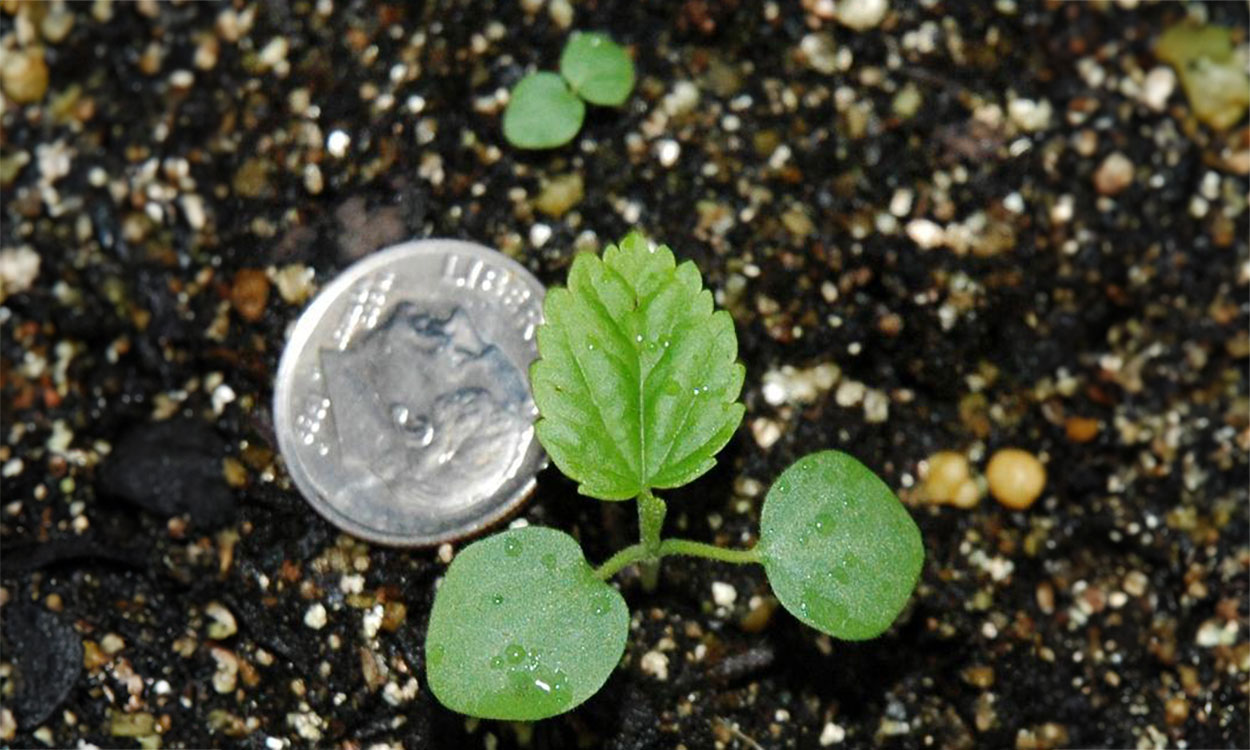
The seedling of black nightshade emerges with a pair of oval to slightly lanceolate shaped, green cotyledons with short hairs on its surface. The first true leaves are spade-shaped with smooth edges (Figure 1).
Roots
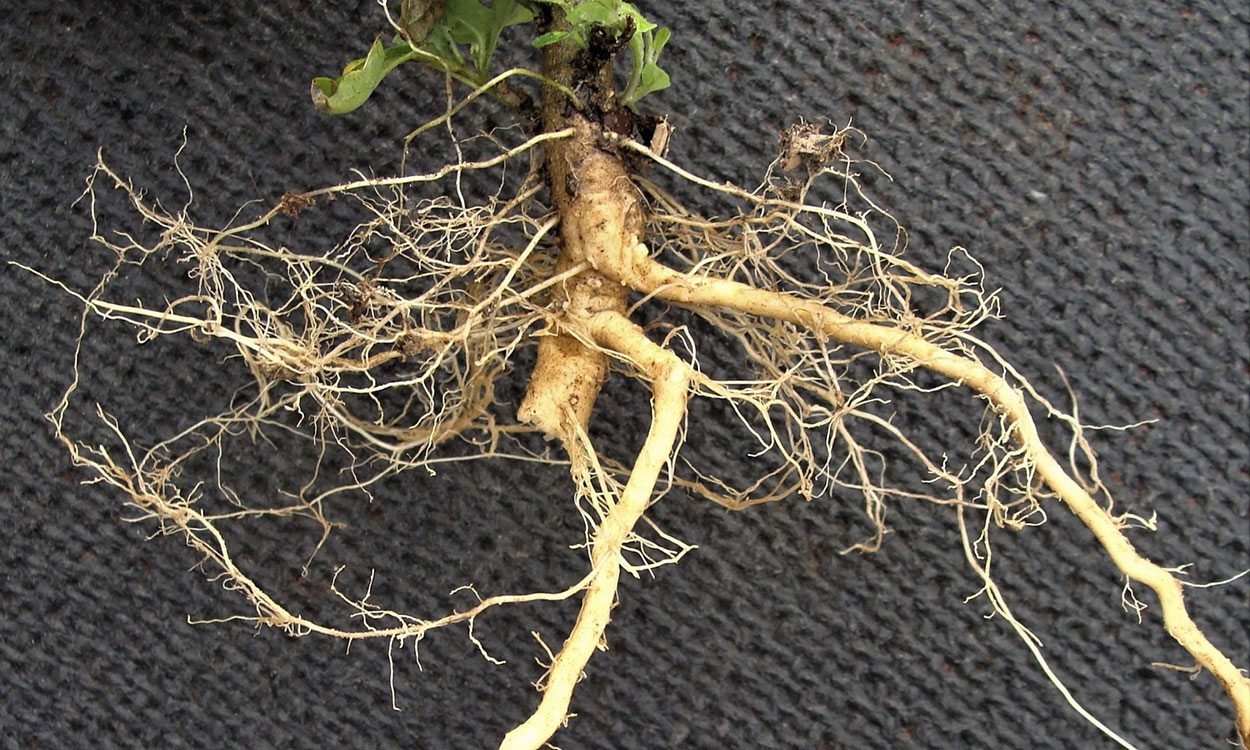
Black nightshade’s root system is fibrous and extensively branched, aiding in the plant’s adaptability and robustness (Figure 2). The roots anchor firmly into the soil, drawing nutrients and water efficiently.
Stems
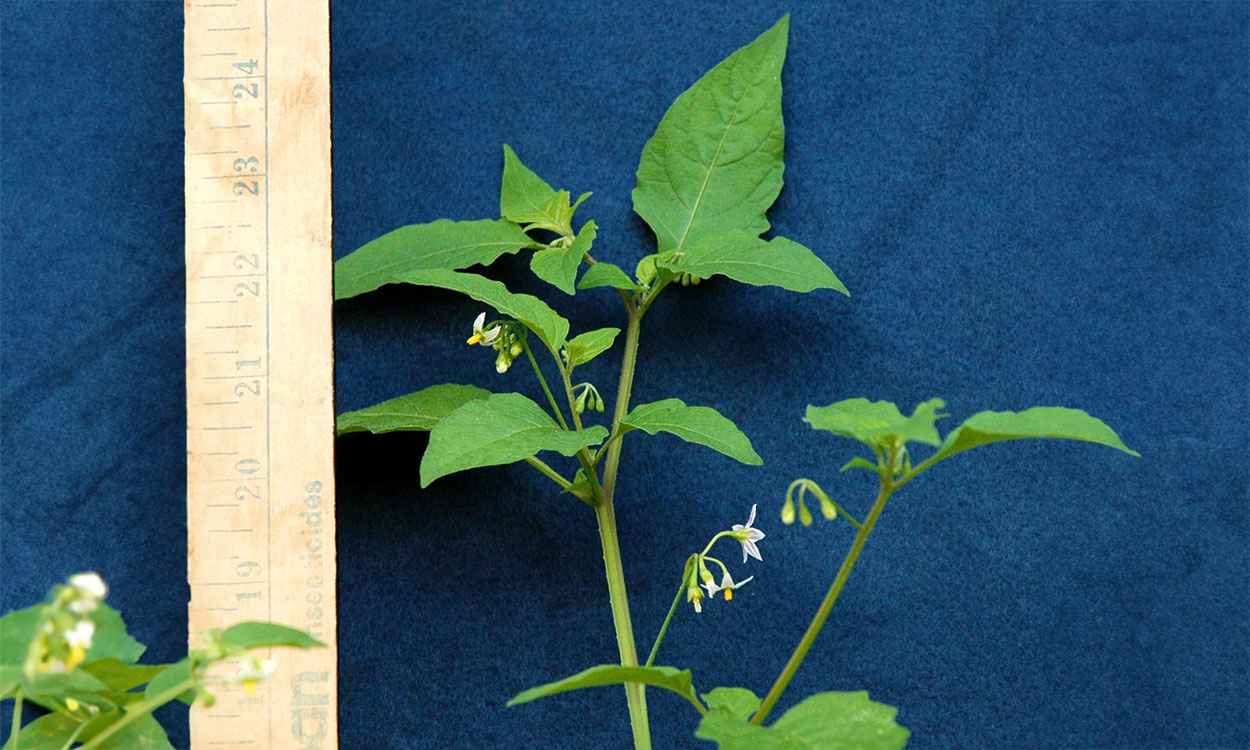
The stems are erect, often reaching a height of 2 feet (or 60 centimeters) or more. They are usually branching and possess a green to purplish hue, giving the plant a distinctive appearance (Figure 3).
Leaves

The leaves are oval to diamond-shaped, with wavy or slightly lobed edges. The undersides of the leaves can have a purple hue. Holes in the leaves can be prominent due to flea beetles feeding on them (See Figure 4). Their lush green color can add a visual appeal to the plant, but due to potential invasiveness, it should not be allowed to propagate in the garden.
Flowers

Flowers of the eastern black nightshade are small, white, and star-shaped with five petals, appearing in clusters (Figure 5). They bloom in the late spring to early summer, leading to the formation of berries. Pollinators of the plant include bees, flies, and other insects.
Fruit

The fruit is a small, round berry that transitions from green to a deep-black or purplish hue upon ripening (Figure 6). Though they can be toxic when unripe, some cultures utilize the ripe berries in culinary applications, with caution.
Growing Conditions
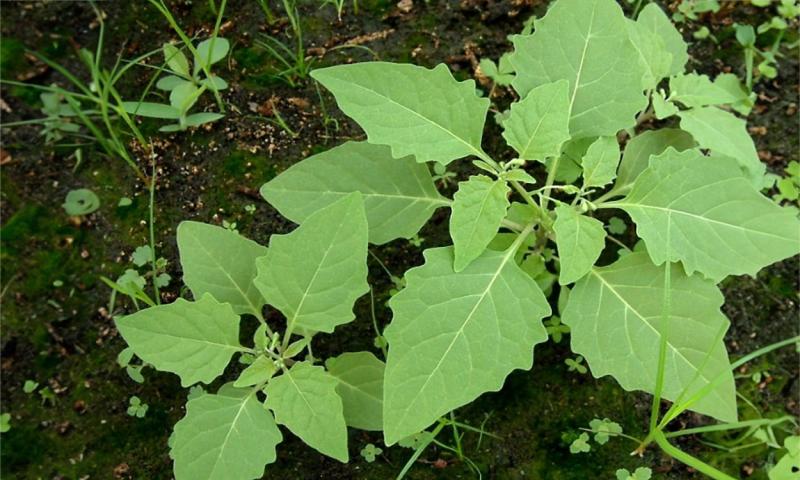
Soil Type
Eastern black nightshade isn’t particularly picky about soil. It thrives in well-drained, loamy soil, but it is also resilient enough to grow in less-than-optimal conditions. Its adaptability makes it a common sight in various environments, from gardens to disturbed soil and waste areas.
Light Requirements
The plant prefers full sun but can tolerate partial shade. This adaptability in light requirements contributes to black nightshade's widespread presence and its ability to colonize a range of habitats.
Propagation
Black nightshade propagates primarily through its seeds, which are often dispersed by birds and other wildlife attracted to its ripe berries. The seeds can remain viable in the soil for several years, causing the plant to reemerge season-after-season if not properly managed.
Fruiting Period
The fruiting period typically occurs from late summer to early fall. The green berries, a common sight during this period, should be handled with caution due to their toxic properties. Proper handling could entail wearing gloves and/or washing hands after handling to prevent inadvertently introducing toxins to the body through eyes, nose, and mouth.
Removal and Management

Given the plant’s robust nature, effective removal strategies are essential.
Hand Pulling
Regularly pulling out young plants before they set seed can be an effective way to manage their population. Be sure to remove the entire root system to minimize regrowth. The removed plant should be removed from the garden so the plant cannot re-root or drop berries containing seeds if mature.
Mulching
Mulching can suppress the growth of black nightshade by limiting access to sunlight and physically inhibiting seeding germination. Applying a thick layer of organic mulch, like straw, wood chips, or leaves, can also enrich the soil and promote the growth of desired plants.
Cultural Practices
Implementing strategic planting and crop rotation can create an inhospitable environment for black nightshade, preventing its establishment and spread.
Safety Considerations
Always remember to handle the berries with caution due to their potential toxicity. The leaves and immature green berries of eastern black nightshade contain solanine, a toxic alkaloid, making them poisonous to both humans and animals. Solanine ingestion can lead to symptoms including abdominal pain, vomiting, and diarrhea, with severe cases potentially resulting in death. The toxicity decreases once the berries turn black and mature, making them safe for consumption in limited quantities, especially when properly cooked. However, the plant poses a significant risk to pets and children who might ingest the poisonous parts unknowingly. Black nightshade can be problematic, not only for humans, but also for cats, dogs, and foraging livestock.
In Summary
By considering its growth requirements and reproduction habits, gardeners can identify and make educated, informed decisions on removal of this resilient plant in the garden ecosystem or implement effective strategies for its control and removal. Happy gardening!
References
- Black nightshade (Solanum nigrum), University of California.
- Selected Broadleaf Weeds in South Dakota Corn Fields, SDSU Extension.
- Black nightshade poisoning, Icahn School of Medicine at Mount Sinai.
- Solanum nigrum (Black nightshade), N.C. Cooperative Extension.


